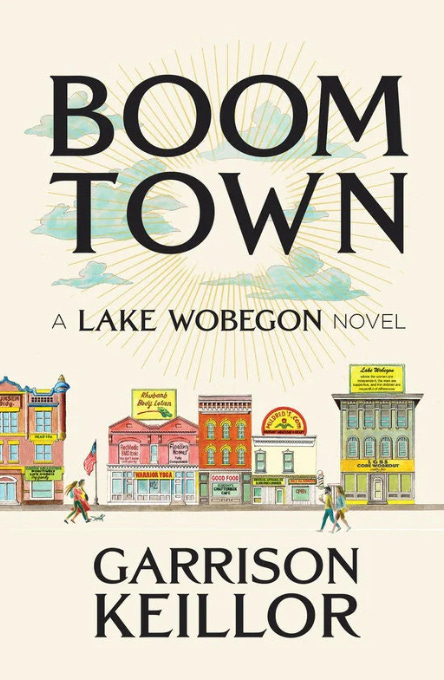“Invictus” by W.E. Henley. Public Domain.
ORIGINAL TEXT AND AUDIO - 2016
Today is Election Day in the United States. English settlers began voting almost as soon as they landed on American soil. One of the first things the Jamestown colony did upon their arrival in 1607 was to hold an election to select the leader of the colony for the coming year. John Smith wrote: “[A]rriving at the place where wee are now seated, the Counsell was sworne, the President elected, which for that yeare was Maister Edw. Maria Wingfield.” Only six men were allowed to vote.
As the 13 colonies took root, they embraced the principles of representative government — but they each determined their own policies and methods. They did not elect their own governors, however; the English king appointed the governors, at least until the American Revolution. The governors in turn filled many positions by appointment rather than election. The first presidential election in the newborn United States was held in 1789. At that time, only white men over the age of 21 who owned property had the right to vote, so only 6 percent of the population went to the polls.
It’s the birthday of novelist Kazuo Ishiguro (1954), best known for haunting, elegiac novels like Remains of the Day (1989), about an English butler who regrets what might have been, and Never Let Me Go (2005), in which human clones are harvested for their organs.
Ishiguro was born in Japan but moved to England at the age of five (1960). He didn’t go back for 29 years. The Japanese characters in the name “Ishiguro” mean “stone” and “black,” respectively. Ishiguro says: “I grew up with a very strong image in my head of this other country, a very important other country to which I had a strong emotional tie. In England, I was all the time building up this picture in my head, an imaginary Japan.” As a child in England, he pored over comic books and was obsessed with movies about cowboys and the American West, which influenced his later writing.
Ishiguro spent a gap year after university hitchhiking through America and working for the Queen Mother as a grouse beater in Balmoral, all the while hauling around his portable typewriter and guitar. He says, “I tried to be a songwriter, but the door never opened.”
Today is the birthday of American social activist and journalist Dorothy Day (1897). Day’s autobiography, The Long Loneliness (1952), details her conversion to Catholicism and the founding of “houses of hospitality,” or what we now call shelters, for people in need. Hundreds of these shelters are still active today.
In 1895 on this day, X-rays were discovered by physicist Wilhelm Röntgen. He conducted many more experiments in secret, and didn’t release his findings until January of 1896. Within three weeks, X-rays were used to set the broken arm of a young boy in Dartmouth, New Hampshire. Röntgen received the first Nobel Prize in physics in 1901.
It’s the birthday of novelist Raja Rao, born in Hassan, India (1908). He’s the author of several novels, including The Serpent and the Rope (1960), The Cow of the Barricades (1947), The Cat and Shakespeare (1965), The Policeman and the Rose (1978), The Chessmaster and His Moves (1988), and a biography of Gandhi.
He was one of the first Indian writers to try to capture with the English language the rhythm of Indian life. He said: “We, in India, think quickly, we talk quickly, and when we move we move quickly. There must be something in the sun of India that makes us rush and tumble and run on. We have neither punctuation nor the treacherous ‘ats’ and ‘ons’ to bother us — we tell one interminable tale. Episode follows episode, and when our thoughts stop our breath stops, and we move on to another thought. This was and still is the ordinary style of our storytelling.”
He taught Indian philosophy at the University of Texas-Austin and died in 2006 at the age of 97.
It’s the birthday of the woman who wrote Gone with the Wind (1936), Margaret Mitchell, born in Atlanta (1900). Growing up, she always tried to be at the center of attention. She said, “If I were a boy, I would try for West Point, if I could make it; or, well, I’d be a prize fighter — anything for the thrills.” She had many suitors when she was young. She fell in love with a man who went to fight in World War I, and he never returned. Then in 1922, she married a man named Berrien Upshaw. He was a cruel and violent husband, and the marriage ended after two years.
Around the same time, she began writing feature stories for an Atlanta newspaper. She got the job when she lied to the editor, saying she was a “speed demon” on a typewriter. She traveled all over the city, writing about rodeos, beauty contests, summer camps, hospitals and prison cells. She also wrote for a gossip column called “Elizabeth Bennett.” Mitchell remarried a few years later, and in 1926 she developed a terrible pain in her ankle. She couldn’t walk, so she had to quit her job and stay in her apartment. She passed the time reading books. After it seemed as though she’d read everything in the library, she decided to try to write a book herself. She wrote Gone With the Wind, starting with the last chapter. The book tells the story of Scarlett O’Hara, a woman born on a plantation, who loses everything after the Civil War. At the end of the book, Scarlett pleads with the man she loves, Rhett Butler, who says he is going to leave her. She tells him she doesn’t know what she’ll do if he goes away. But he replies, “My dear, I don’t give a damn.”
Mitchell wrote the book on a sewing table and stuffed each section of the book into a manila envelope. She didn’t like to admit that she was writing a novel. She said, “I fought violently against letting even a close friend read as much as a line.” When someone walked into the room, she threw a bath towel over her typewriter. It took her nine years to finish the book. In 1935, the famous editor Harold Latham came to Atlanta. When she met him, he said he had heard she’d written a novel. But she felt shy and told him he was mistaken. Soon afterward she was talking to an acquaintance, who said to her, “I wouldn’t take you for the type who would write a successful book. You know you don’t take life seriously enough to be a novelist … I think you are wasting your time trying.” She was so furious that she went home and grabbed her manuscript. She ran to the editor’s hotel and caught him just as he was leaving to catch a train. The book was published in 1936. It ran over a thousand pages, and sold millions of copies. In 1939, the movie adaptation appeared starring Clark Gable and Vivien Leigh.
Margaret Mitchell said, “The world can forgive practically anything except people who mind their own business.”
Be well, do good work, and keep in touch.®
A mustread, BOOMTOWN - CLICK HERE
“You can’t go home again unless you’re Garrison Keillor and home is Lake Wobegon. Then, of course, it is imperative that you do so—and we are fortunate indeed to tag along and share in the final chapter of the most fascinating and compelling characters ever conjured from the most vivid imagination of America’s greatest storyteller! In Boom Town, we are invited to catch up as Garrison gets caught up with all of those beautifully flawed human beings that populate and promulgate their mythical town where all the women are finally accounted for, all the men are self-realized or died trying, and all the children are still way above average.” —Martin Sheen






I find it odd that you fail to mention the first written document, written in 1620, that declared all people in their colony (well, men, but consider the times) were to determine their leadership by vote, regardless of status. This document, signed by all men, was the Mayflower Compact, acknowledged to be one of the bases of the Massachusetts Constitution, itself influential in the creation of the US Constitution.